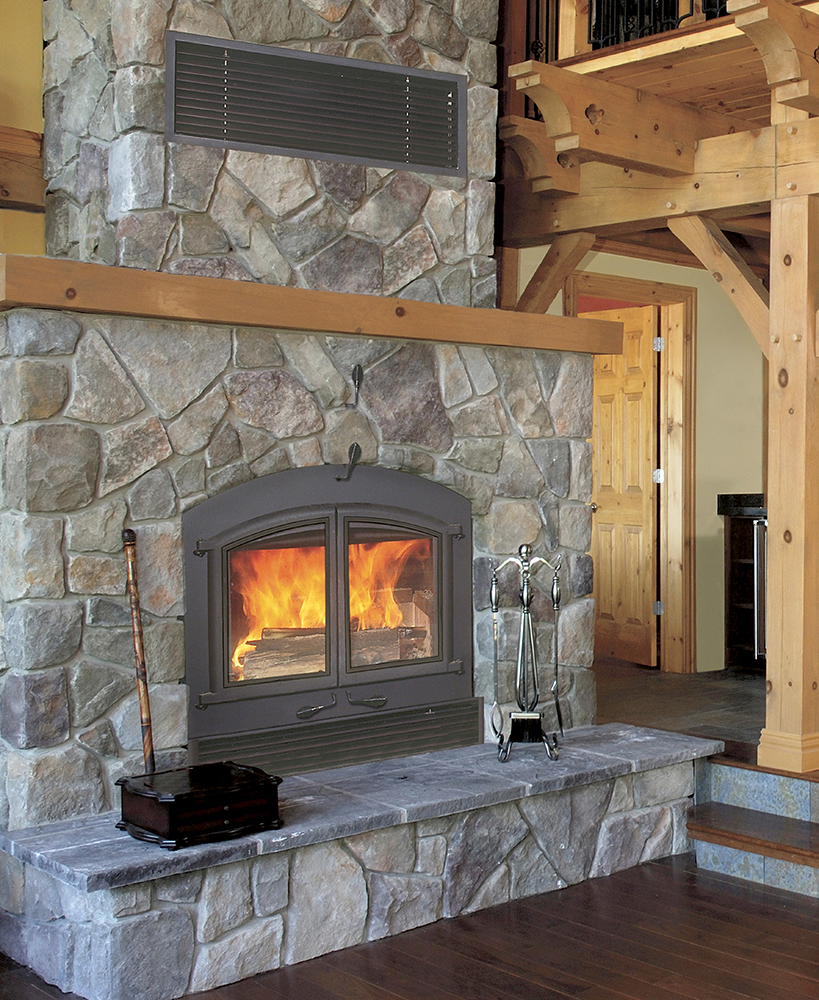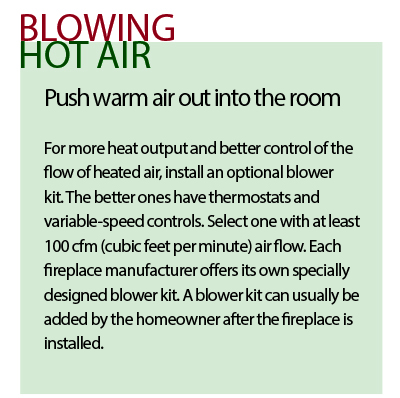Prevent heat from going up your fireplace chimney

We use a heat pump but want an efficient, wood-burning fireplace or insert for extra heat and emergencies. Our masonry fireplace seems to chill the house. What should we look for?—Paul
Using an open masonry fireplace can cool your house and result in higher overall heating costs. Heated indoor air is drawn into the fireplace and lost up the chimney, and cold outdoor air is drawn into your house through windows, doors and gaps. While you may feel comfortable by the fireplace, your heat pump or furnace can run up to 10 percent more to warm the rest of the house.
Efficient wood-burning fireplaces or inserts have tight-sealing glass doors to minimize loss of heated room air. A 42-inch wide, EPA-certified wood-burning fireplace can produce from 8,000 to 60,000 Btu per hour, some with overall efficiency as high as 77 percent.
 If your old fireplace is large, you may be able to fit a new insert inside it, saving hundreds of dollars. If you plan to install a fireplace elsewhere, installing a zero-clearance model is best, as the double-walled design with insulation can be safely placed against wood wall studs.
If your old fireplace is large, you may be able to fit a new insert inside it, saving hundreds of dollars. If you plan to install a fireplace elsewhere, installing a zero-clearance model is best, as the double-walled design with insulation can be safely placed against wood wall studs.
A heating-circulating type of fireplace is a must for the best efficiency and more heated air output. Many designs operate without a fan and rely on natural flow of room air around the superhot firebox. As the air gets hot, it becomes less dense and naturally flows out into the room through an upper vent. This pulls cooler room air into a lower inlet to be heated.
For the greatest efficiency and least drafts indoors, install an outdoor combustion air kit before you install the fireplace, as a duct is required. Installation is simpler with a raised hearth. A register with at least 12 square inches of net free vent area should be adequate to run it under the floor to the front of the firebox.
JAMES DULLEY is a nationally syndicated columnist who writes on energy efficiency and do-it-yourself energy topics.

